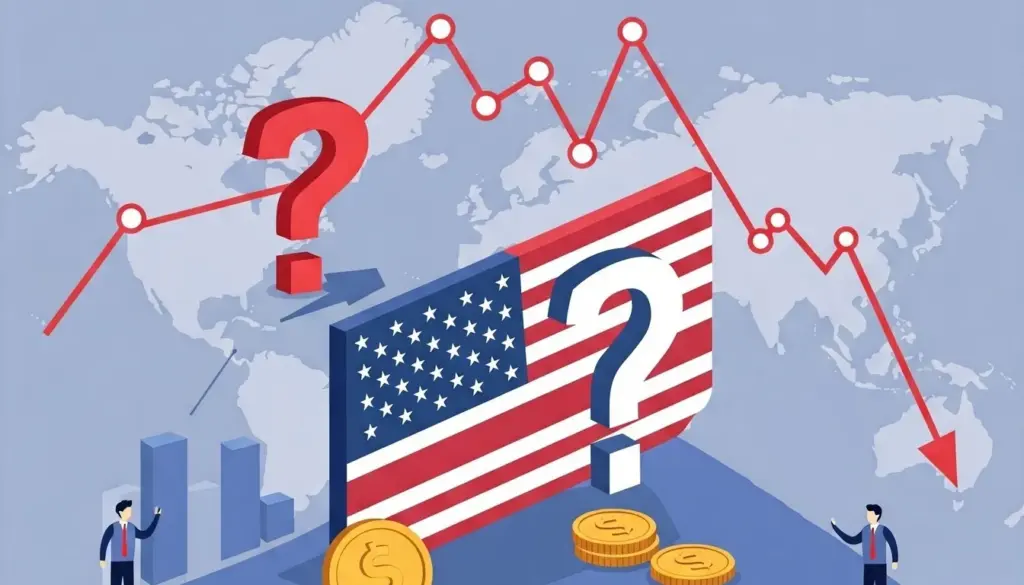President Trump’s second term has seen a dramatic escalation of his “America First” trade policies, with hefty tariffs slapped on imported steel, aluminum, and a wide range of Chinese goods. While the administration claims these measures are designed to revitalize American manufacturing and correct trade imbalances, they’ve instead stirred up global trade tensions and rattled financial markets. The recent 90-day tariff reprieve, excluding China, has raised eyebrows and sparked intense speculation about the future of U.S. economic policy. Let’s delve into the current state of Trump’s tariffs, their impact on the U.S. economy, and what the future might hold.

The Current State of Trump’s Tariffs and Financial Market Pressures
- Intensified Steel and Aluminum Tariffs: Building on his first-term policies, Trump has significantly increased tariffs on imported steel and expanded those on aluminum. This has driven up costs for industries like automotive and construction, adding strain to the overall economy.
- Escalating Trade War with China: The administration’s aggressive stance against China’s trade practices has led to tariffs on nearly all Chinese imports. This trade war, intended to reduce the U.S. trade deficit and protect intellectual property, has triggered retaliatory tariffs from China, impacting both economies and the global market.
- Pressure on Key Trading Partners: The U.S. has also used the threat of tariffs to gain leverage in trade negotiations with major partners like the EU, Canada, and Mexico, creating uncertainty and market volatility.
These tariffs have contributed to rising import prices, increased production costs for businesses, and reduced consumer purchasing power. This uncertainty is also a major factor in the financial market volatility.
The Immediate Impact of Trump’s Tariffs on the U.S. Economy
- Rising Inflation Concerns: Tariffs on imported goods, especially consumer products from China, have led to higher prices, fueling inflation and reducing consumer spending. This could force the Federal Reserve to raise interest rates, further destabilizing financial markets.
- Negative Impact on Business Performance: Increased costs for imported materials have squeezed manufacturers’ profits and discouraged investment, potentially weakening long-term competitiveness. Companies deeply involved in global supply chains face heightened uncertainty.
- Hardship for the Agricultural Sector: China’s retaliatory tariffs have severely impacted U.S. agricultural exports, particularly soybeans and corn, causing a sharp decline in farm incomes.
- GDP Contraction: According to the U.S. Department of Commerce, the first quarter of 2025 saw a GDP decrease of 0.3%. This is well below the expected 0.4% increase and the first quarterly contraction in three years. This contraction is thought to be caused by companies rapidly importing goods before tariffs took effect. Import increased by 41.3%, while export did not keep up.
To prevent further financial market turmoil, the U.S. government has implemented a 90-day tariff suspension for most trading partners, excluding China. This move is seen as an attempt to stabilize markets, but its long-term effectiveness is questionable.
The 90-Day Tariff Reprieve: Meaning and Outlook
- Potential Policy Shift: The 90-day suspension suggests a possible, albeit temporary, softening of the administration’s hardline trade stance, aimed at calming market fears.
- Recognition of Economic Risks: The decision to prioritize financial stability indicates a recognition of the significant risks posed by the current tariff policies.
- Continued Pressure on China: Excluding China from the tariff reprieve signals the U.S. intention to maintain pressure on Beijing, although recent comments by President Trump suggest a potential for future negotiations.
- Ongoing Uncertainty: While the 90-day reprieve may provide short-term relief, the underlying trade tensions remain unresolved, creating the potential for further market volatility.
This 90-day pause reflects the Trump administration’s attempt to balance its trade agenda with the need to stabilize the U.S. economy. Whether this leads to long-term policy changes remains to be seen.
The Future of U.S. Trade Policy and the American Economy
President Trump’s aggressive tariff policies have significantly impacted the U.S. economy, leading to market instability. The 90-day tariff reprieve offers a temporary respite, but the fundamental trade disputes remain unresolved.
The U.S. faces the challenge of balancing domestic economic stability with international relations. Continued protectionist policies could lead to long-term economic decline and increased isolation.
The effects of Trump’s tariffs have left deep wounds on the U.S. economy. Whether the 90-day reprieve will act as a “life jacket” or merely a “breather” depends on future policy decisions and global developments. The direction of the U.S. economy remains uncertain.
